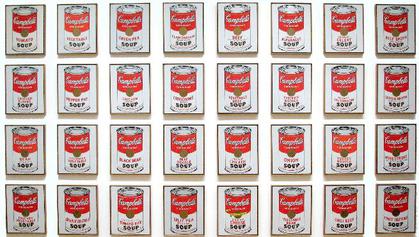Facts About Campbell's Soup Cans
Andy Warhol’s "Campbell's Soup Cans" also known as "32 Campbell's Soup Cans" is a groundbreaking piece of art created between November 1961 and April 1962. This iconic work comprises thirty-two canvases, each depicting a different variety of Campbell's Soup available at the time. Warhol employed a semi-mechanized screen-printing process, marking a departure from traditional painting techniques and signaling a pivotal shift in artistic practice. Rooted deeply in popular culture, this piece played a crucial role in establishing Pop Art as a significant movement in the United States.
When first unveiled, "Campbell's Soup Cans" generated controversy due to its commercial subject matter and its stark contrast to Abstract Expressionism, the dominant style of that era. However, this very controversy propelled Warhol into the spotlight as a serious artist. The exhibition of this work at the Ferus Gallery in Los Angeles in July 1962 was a watershed moment in Warhol’s career, garnering him increased recognition and critical acclaim. Despite initial skepticism, Warhol's "Campbell's Soup Cans" firmly established his reputation as one of America's most celebrated pop artists.
Warhol continued to revisit the theme of Campbell's Soup cans throughout his career, creating various iterations and adaptations of the original work. The soup can motif became synonymous with Warhol's artistic identity, underscoring his role as a pioneer in the Pop Art movement.
The motivations behind Warhol’s choice of Campbell's Soup cans as a subject remain a topic of speculation. Various anecdotes suggest that his inspiration ranged from personal preferences to broader artistic influences. The work’s celebration of ordinary culture and its rejection of traditional emotional expression challenged prevailing notions about art and its intrinsic value.
Warhol's legacy extends far beyond the "Campbell's Soup Cans" series. His oeuvre includes celebrity portraits, experimental films, and more. His contributions to both art and popular culture continue to be celebrated, influencing contemporary artists and maintaining significant value in the art market.

 Canada
Canada